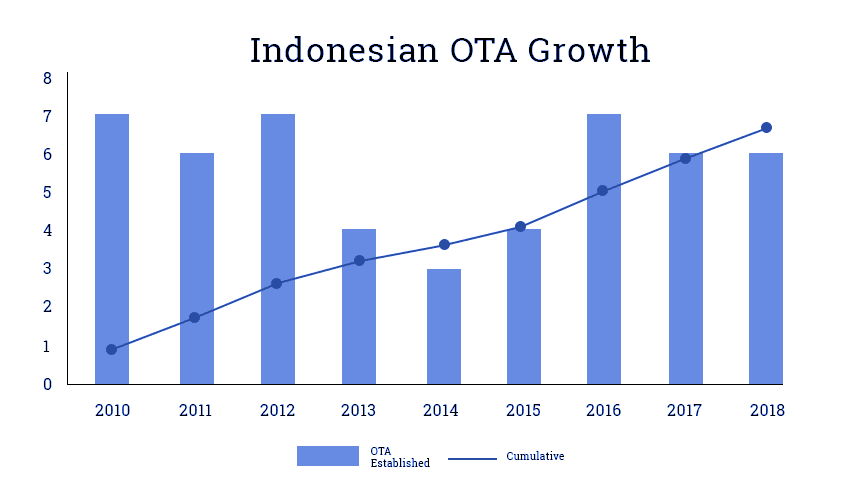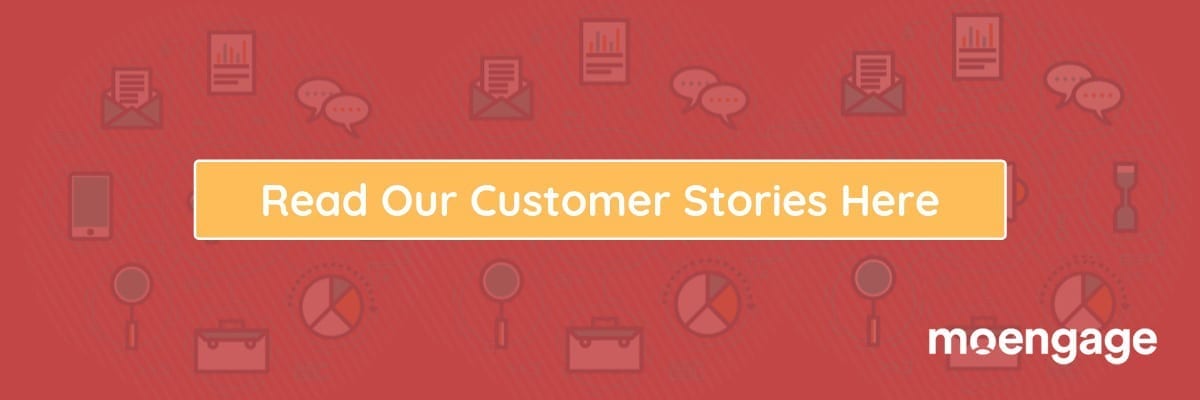How OTAs in Indonesia Use Hyper Personalization to Reduce Churn [Industry Study]
![How OTAs in Indonesia Use Hyper Personalization to Reduce Churn [Industry Study]](https://www.moengage.com/wp-content/uploads/2020/07/Industry-Study-How-OTAs-in-Indonesia-Are-Using-Personalization-to-Reduce-Churn.jpg)
Reading Time: 5 minutes
Indonesia is one of the popular tourist destinations in Asia. According to Indonesia’s statistics bureau, the foreign tourist arrivals was 15.8 million in 2018. With the tourism industry gaining a foothold in Indonesia, there is a sudden increase in the number of Online Travel Agents (OTA). This may be due to digitization in the country and the convenience it offers customers to book hotels, flights, transport, etc. online. According to the Google-Temasek report, Indonesia’s OTA ecosystem has grown by 20% each year since 2015. Currently, there are more than 50 OTA startups in Indonesia offering online travel services to both domestic and international tourists. Within a span of eight years (2010 -2018), Indonesia’s travel industry has grown exponentially. A survey conducted by DailySocial and JakPat reveals that over 71.4% of Indonesians use OTAs to plan their trips. It is also expected to grow further with President Joko Widodo’s plans to make tourism as the top source of foreign exchange.

Source: ResearchGate Let’s dive a little more to understand why is this industry so popular and how are they able to offer personalization in their engagement.
What makes the OTA industry so popular in Indonesia?
- Dependency on technology in tourism: Although Indonesia’s travel industry was traditionally a brick-and-mortar business, it is quickly being replaced by technology. A study by Travelport reveals that 68% of Indonesian travelers use smartphones to plan their trip, making them the third most digitally dependent traveler nations in the world. According to Statista, the annual growth rate will increase by 16.45% by 2020, with most bookings done for hotels, package holidays, and accommodations.
- Personalized experience: Apart from the convenience that OTAs offer to its customers to book flight tickets, hotels, and packages online, it also provides a personalized experience to the customer that they perhaps may not have experienced offline. OTA offers customized travel options based on the customer’s demands and budget.
- More options: Consumers prefer to check the reviews and ratings before booking a hotel room or visiting a restaurant. They also prefer to compare prices on multiple websites before choosing the best options. Unlike brick-and-mortar travel agencies, the OTAs offer myriad options for travelers that help them to plan their trips according to their needs and budget. We would not be wrong to say that today, almost every person is a travel agent, thanks to the power of technology.

Challenges in the OTA Industry
Although the OTA industry in Indonesia is performing well, there are a few common challenges that the OTA players seem to face. One of them being a decrease in customer loyalty. Unlike traditional travel agents who had their set of loyal customers, OTAs have a tough time retaining customers on their platforms. Considering there are multiple OTA options available, customers can check and compare prices on various websites before settling for the best option. To add to the woes, marketers are yet to master the art of creating personalized customer journeys across different touchpoints. Currently, customer journeys are disjointed, and OTAs fail to create micro-moments for the customer, which leads them to lose interest and check another website or app for information.
Bonus Content:
|
How Traveloka and Tiket.com are paving the way for OTAs?
As the OTAs grapple with the issue of creating micro-moments and reducing churn, two of the foremost companies, Tiket.com and Traveloka have successfully managed to combat this challenge with their digital-first approach.
- Traveloka: Traveloka, one of the first unicorns in Indonesia, demonstrated a steady growth strategy right from the beginning. From creating dedicated landing pages for each of their search results to offering cheap air tickets and hotel discounts, Traveloka grew rapidly within a few years. To personalize the experience, Traveloka relied on email marketing campaigns to drive customers to make a purchase.
- Tiket.com: Tiket.com has become a household name due to its unique digital marketing strategies. From making videos as the core of their marketing campaign, to using smart audience targeting solutions to target only those audiences who were interested in traveling and being with the customer at every stage of the customer’s purchase journey—the digital-first approach of Tiket.com increased the purchase intent by 16.7% and improved the search interest and favorability by 28.5% and 18.8% respectively.
How is MoEngage helping OTAs deliver personalization to customers?
Both Tiket.com and Traveloka were aware that personalization and re-engagement with the customers could add tremendous value to the customer’s experience. They wanted to improve customer engagement and retention on the platform. That’s where MoEngage played a pivotal role. We offered them marketing automation support to help them engage better with customers and to reduce the churn on their platform.
Tiket.com, on the other hand, used MoEngage’s workflow to personalize the user’s lifecycle journey. They segmented the users as ‘First users,’ ‘Repeat Purchase,’ and ‘Inactive’ and created personalized messages based on their browsing and purchase history. For example, they encouraged the first users who abandoned the cart to complete the purchase using push notifications and emails. They also offered discounts on the products last browsed by the user, which led the user to come back to the app. This increased the first purchase by 40%. They also used MoEngage’s DPM (Dynamic Product Messaging) powered push recommendations to send contextual emails and push notifications to users who completed the first purchase. This improved the repeat purchase rate. Similarly, they ran custom email marketing campaigns to re-engage with users who had not opened the app for 60 days. The entire exercise helped Tiket.com to reduce the overall churn rate by 30%.
You can read more about it. Traveloka, for instance, wanted to run a remarketing campaign for all existing and new users. Instead of a generic message with a call-to-action, they wanted to send a more personalized and relevant message to the users. They used MoEngage’s Smart Triggers to create a remarketing campaign. They added personalization to the copy by adding a hotel’s name that the user searched for to make it relevant and created a call-to-action based on the user’s behavior. The personalization in the push notification and CTA improved the engagement rate by 2.5x and led 10% of more users further into the funnel.














